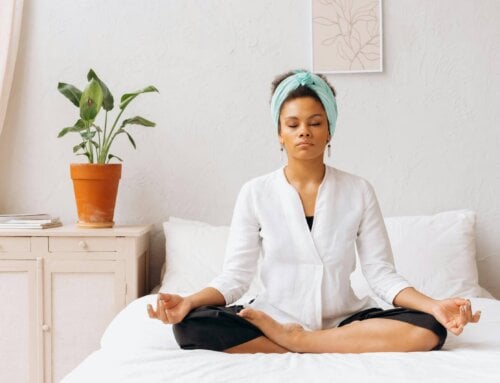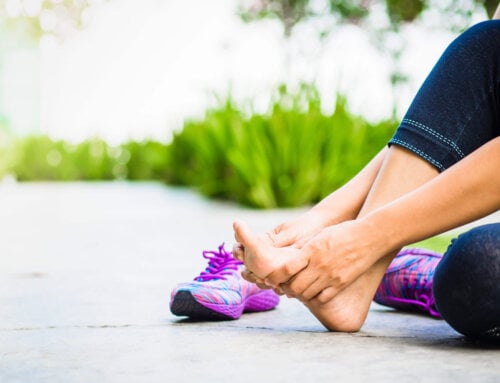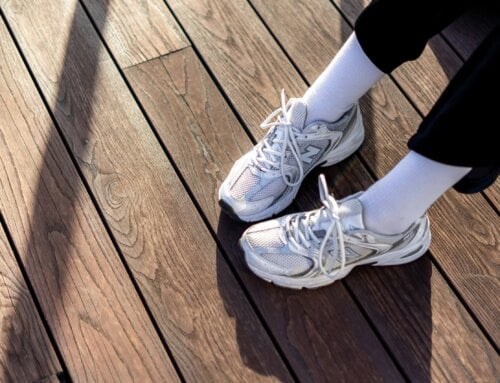I’m awake at 1:00 am with a feeling of sickness in my stomach. I wonder if it’s from anxiety created by a weird dream, hormonal imbalances, and/or high blood sugar. Or did I go to bed angry? The deep-sunken feeling of thick stagnant sludge in my stomach begins to settle into my consciousness. My Mini Mag flashlight illuminates the blood sugar meter, which reads 357. I remember in my high blood sugar fogginess that my blood sugar was 140 before I went to sleep, and I did nothing out of the ordinary. Now, only a few hours later, I am rudely awakened and have to force myself to gather my senses to correct the situation. Fluctuations in blood sugar are mind boggling and frustrating, not to mention the feelings of irritability, anger, fatigue, victimization, and depression that come along in daily life with diabetes. It can create a sense of failure if one does not get a handle on creating a healthy mind, body, and spirit.
I immediately take insulin to bring my blood sugar down. I will check again an hour from now to see if it is dropping. Feeling like a pin cushion that can’t escape, I ask my mind stay on-task and positive. Keeping my mind on the positive helps me to stay healthy with this complicated disorder.
Finding Balance
Continually observing yourself is a necessity. Always take into account each physical activity, what you are ruminating about, what food you have or don’t have in your car or purse, and how many carbs you’ve eaten. Keeping balance: that’s the key. I am fifty years old and have lived with diabetes for thirty years.
I currently give myself four shots of insulin a day. I check my blood sugar five to seven times per day and adjust with food or insulin according to my blood sugar level. I have had five laser eye surgeries due to background retinopathy and am contemplating the use of stem cell treatment in my future. It is true that the body is resilient, but damage can occur to every part of the body after extended high blood sugar levels. It brings home the importance of keeping your blood sugar balanced as much as humanly possible. We all make mistakes, forget to take our insulin, eat something we shouldn’t, or dine out and don’t really know the amount of carbohydrates we are eating in that mystery salad.
There are so many elements to caring for oneself. It is not always easy to find a continual sense of well-being living with a chronic disease. As I have learned, however, it is definitely a manageable challenge, and one can live a healthy, happy, and contented life. Personally, discipline is my number one challenge. It helps if I set up a schedule for the day because I have more success doing the things that I set out for myself. Addressing the mind and body is important because they both affect our blood sugar levels.
Exercise is on my schedule every day. There is no debate about the importance of exercise and diabetes. I usually walk, bike, do yoga, or swim.
We all have different types of stress in our lives. Some of us are wired reactive and high energy, while others have a tendency toward the mellow, slower energy. I find meditation or relaxation techniques help with stress reduction by calming and centering the mind.
Here are the positive effects produced by meditation and/or relaxation techniques:
- Improved memory,
- Decreased insomnia
- Improved immune system
- Decreased depression
- Increased energy levels
- Greater clarity, memory, and objectivity.
Relaxation Techniques
Here is a simple technique that I use: Sit in a quiet, uninterrupted environment and focus on something. It can be your breath, a candle light, or a calming positive word that you say internally or out loud, a positive word like “peace, trust, love, release fear” (repeated over and over until the end of your 20 to 40 minute period). We all have thoughts arise while we are trying to focus. It is important to discard the thoughts that come up. Visualize the thoughts floating away in a cloud. Returning to your breath or repeated word helps you stay focused and gain calmness in your body.
Another method that I find calming and that also helps with emotional release is to work with your creative self. Many people say that they are not creative, but we all have a creative part within us. It is fun to sit down with a large piece of paper, water-based paints, and many brushes. The best technique is to tell your brain to go sit on the shelf, so that you are not analyzing or judging your work. You can say this out loud. It sounds a little odd, but it simply sets up a boundary when you do this. It lets your mind know that you are not interested in its input and helps you remember to not let your brain get involved in your emotional process or release.
Allow your hand to go to whatever paint brush and color you are drawn to and then dip your brush in that color, place it on paper, and allow your hand to move with your breath without thought or judgment. You will find that it is calming and emotionally therapeutic.
Lastly, it is important to look at our thoughts. Negative thoughts affect our physical being. Look at your self-talk, what you say to yourself when things aren’t going well. For example, I may say to myself in anger “Liz, you knew an extra little helping of toast would mess up your blood sugar. What were you thinking you idiot?” I could have said to myself “OK, I made a mistake, and I will work on this,” with gentleness and love. It is good to correct the negative talk with a positive statement, often the exact opposite of the negative one. Repeat it as many times as the need arises to reaffirm to those neurons in your brain that the positive path is the one to take, not the rutted, negative neural pathway of thought.
It is never too late to build new neural pathways toward the positive. It just takes a little discipline to watch our thoughts and correct them to the positive. Sometime, it takes many, many repetitions. It simply decreases stress when you are thinking positive, loving thoughts about yourself.
These are a few things that have helped me cope with diabetes and increased my overall health over thirty years with diabetes. There is a big payoff in taking care of ourselves. As you create the discipline to maintain and improve your health, you feel much healthier and happier on a daily basis. It is fantastic to gain a sense of accomplishment and a deep knowing that we are creating the greatest health possible.
I wish you the best in your path to health!
Elizabeth Polasek has a MA in Psychology and is a Licensed Professional Counselor. She has been counseling for 19 years and has lived with diabetes for 30 years. She offers diabetic phone/camera counseling with Skype, as well as group therapy. Elizabeth has an educational website being developed and is currently writing a book on Diabetes.
References:
Diabetes Care 27:2161-2165, 2004
Scientific Research on the Transcendental Meditation Program: Collected Papers, Volume 1: 385-392, 1977 – http://www.tm.org/discover/research/charts/e8.html
Human Physiology 25: 171-180, 1999
Journal of Counseling and Development 64: 212-215, 1985.
The American Journal of Managed Care 3: 135-144, 1997.
Journal of Counseling and Development 64: 212-215, 1985.












Leave A Comment